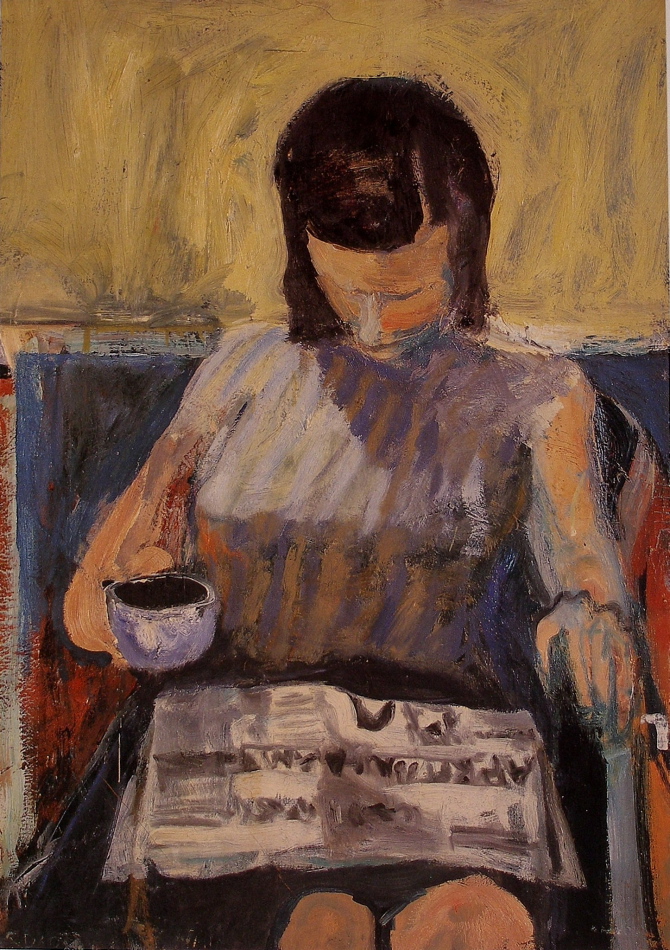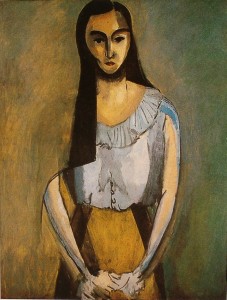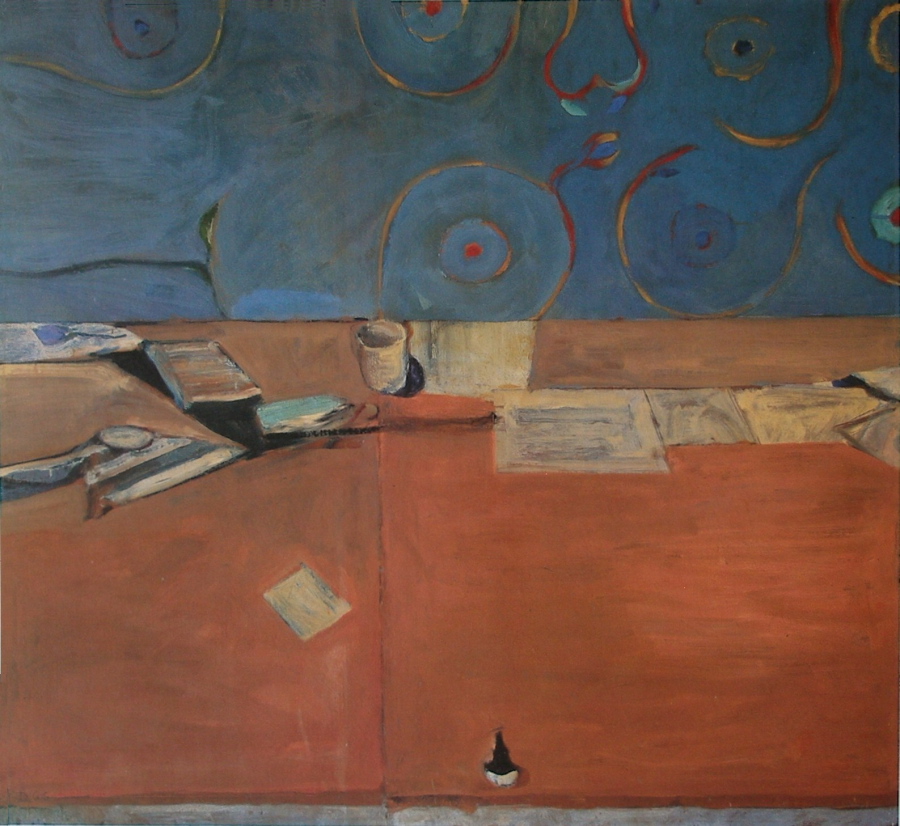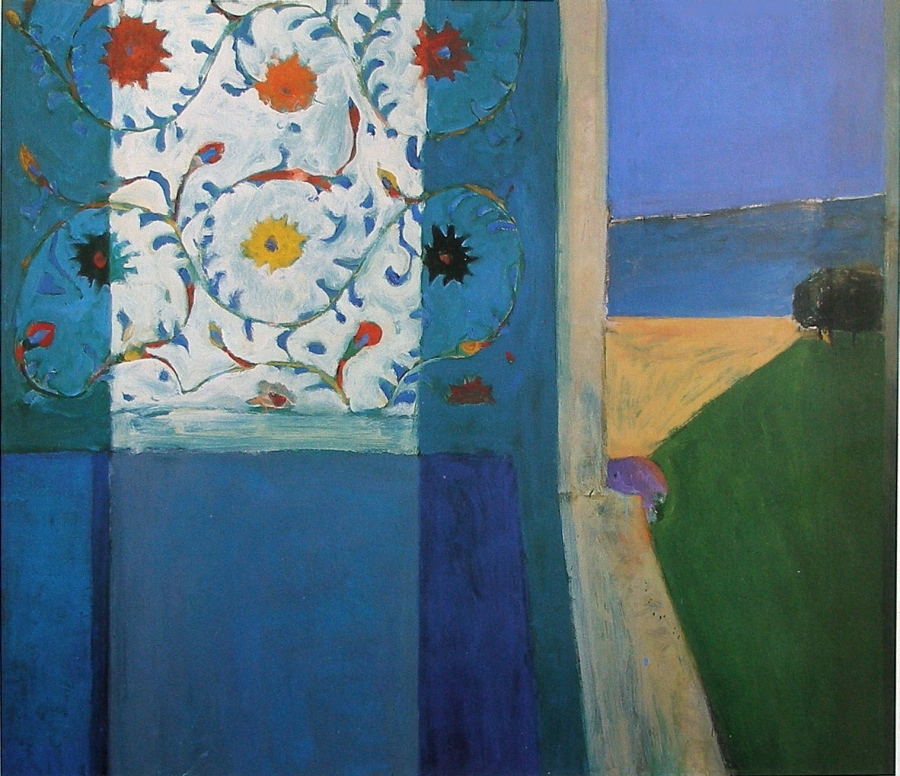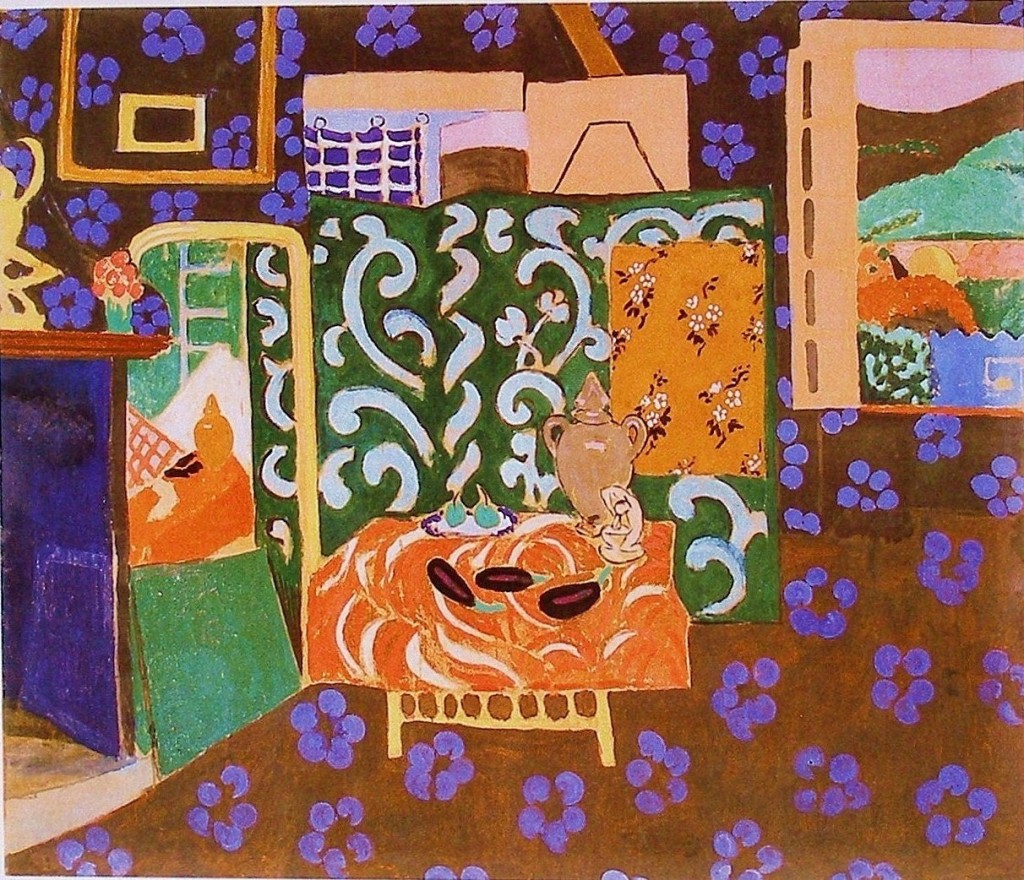How Diebenkorn integrated the figure with the Matisse like rhythm of the background is beautifully considered. Let’s begin with the horizontal black shape at the left of the painting and how it sweeps up and integrates with the blue shadow, through the red shape, then with her hair. The sweep also connects to the delightfully assessed black shape above her right shoulder, which brings the eye to the blue stripe on her blouse, very impressive. We then automatically follow the red stripe which not only integrates with her hair, but when you follow it down from her right shoulder you will eventually connect to the stem of the small flower above her left shoulder, which then joins with a white shape connecting us to the horizontal division of the painting. Very sophisticated.
There are two wonderful pulls permitting us to leave the focus of her hair and move through the painting. I’m referring to the beautifully balanced black shape at the bottom and the other one at the right edge of the painting. Remember, these are meant to be felt more than noticed and pulls relate through closeness in either value or colour.
The centres of the flowers provide a beautiful subtle horizontal rhythm supporting the division in the composition and gently relieving us from the strength of her black hair. Do you find your gaze moving to the dots when you focus on her? As I said these considerations are not meant to be obvious. They are invitations to a visual dance.
I must also mention the fantastic blue shadow which Diebenkorn painted as a shape. We see a master permitting preceding masters to influence his work. We can all join this great tradition, whether we paint or love to engage through cultivated study.


